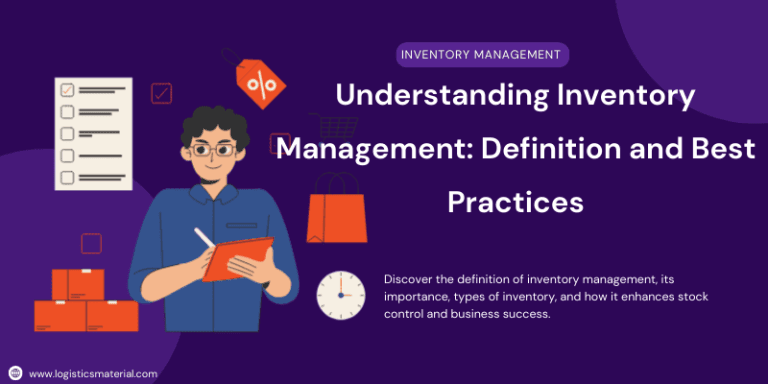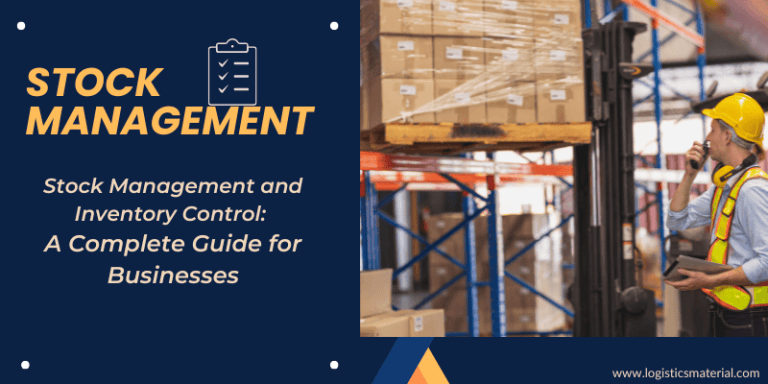Your Trusted Guide to Logistics Materials & Supply Chain Solutions
Discover Types, Best Practices, and Global Suppliers for Efficient Logistics Management
Welcome to logisticsmaterial.com, the definitive hub for optimizing your logistics and supply chain with precision-engineered logistics materials. In an era where 89% of businesses cite supply chain efficiency as their top priority (Gartner, 2023), our platform equips you with cutting-edge insights, global supplier networks, and sustainability-driven strategies. Whether you’re fortifying warehouse safety, sourcing biodegradable packaging, or benchmarking material durability against industry standards, we deliver actionable data, case studies, and tools tailored for B2B success.
Dive into our 2024 Global Logistics Report, featuring proprietary research on cost-saving innovations like IoT-enabled pallets and circular economy models. Backed by partnerships with CHEP and Uline, our guides are trusted by Fortune 500 companies to reduce operational costs by up to 40%. Ready to future-proof your logistics?
Explore Logistics Materials Posts: Top Shipping Resources
What Are Logistics Materials? Definition, Functions & Types
Logistics materials form the operational backbone of global supply chains, ensuring goods move seamlessly from production to the end consumer. These materials—ranging from warehouse pallets and shipping containers to shock-absorbing dunnage—are designed to protect, store, and transport products efficiently. By minimizing waste, reducing handling time, and optimizing space, logistics services play a crucial role in supply chain management.
Companies across industries rely on logistics materials to enhance operational efficiency, reduce product damage, and ensure regulatory compliance. Whether used in warehousing, distribution, or last-mile delivery, these materials help streamline the movement of goods while reducing environmental impact and costs.

Key Functions of Logistics Materials
Logistics materials ensure product protection, efficient storage, and secure transportation. They help minimize damage, optimize space, and enhance supply chain efficiency.
1- Protection
One of the primary functions of logistics materials is safeguarding goods from potential damage caused by environmental hazards, improper handling, or transportation stress. Effective protection ensures product integrity, reduces losses, and enhances customer satisfaction.
- Shielding Against Environmental Factors: Materials like foam-insulated packaging protect perishable goods from temperature fluctuations, moisture, and physical impact.
- Example: According to the FDA (2023), foam-insulated packaging reduces perishable food spoilage by 22%, highlighting its role in maintaining product freshness during transit.
- Protective Dunnage: Bubble wrap, airbags, and corrugated inserts cushion fragile items against shocks and vibrations during shipment.
- Storage
Efficient storage solutions maximize warehouse space and facilitate easy inventory management. Logistics materials are designed to optimize stacking, organization, and accessibility.
- Maximizing Space Utilization: Stackable plastic pallets and collapsible containers enable vertical storage, increasing storage density without compromising safety.
- Case Study: A leading e-commerce company improved warehouse efficiency by 35% by switching from wooden to plastic pallets, allowing for better stacking and reducing manual labor.
- FIFO & LIFO Storage Systems: Specialized racking systems help manage stock rotation based on First-In-First-Out (FIFO) or Last-In-First-Out (LIFO) principles, ensuring efficient inventory flow.
- Transportation
During transit, logistics materials secure cargo, preventing movement that could cause damage. The right transport materials enhance safety, reduce transportation costs, and improve sustainability.
- Load-Securing Materials: Steel strapping, load-locking bars, and shrink wrap stabilize cargo, ensuring it remains intact during shipping.
- Sustainability in Logistics: Many businesses are adopting eco-friendly alternatives to reduce waste.
- Pro Tip: Biodegradable strapping cuts landfill waste by 90% compared to traditional plastic strapping, making it a greener choice for securing shipments.
Types of Logistics Materials
Logistics materials can be broadly categorized into three main types based on their function:
- Packaging Materials – Boxes, pallets, crates, and dunnage used for product protection and shipment.
- Storage Solutions – Racks, bins, shelving, and automated storage systems designed for organized inventory management.
- Transportation Aids – Straps, shrink wrap, and air cushions that secure and stabilize cargo in transit.
By selecting the right logistics materials, businesses can significantly improve supply chain efficiency, reduce costs, and enhance overall operational performance. As sustainability becomes a priority, the shift toward eco-friendly materials is revolutionizing logistics management, paving the way for a greener, more efficient future.
Common Types
- Pallets:
- Wooden: Cost-effective for short-haul logistics.
- Plastic: Hygienic, durable, and ideal for automated systems.
- Metal: Fire-resistant and suited for heavy machinery.
- Packaging:
- Corrugated boxes (customizable for fragile items).
- Stretch wrap with UV resistance for outdoor storage.
- Dunnage:
- Inflatable airbags to prevent cargo shifts in transit.
- Foam dividers for delicate electronics.
- Strapping:
- Polyester straps for medium-weight loads.
- Steel bands for securing construction materials.
Industry Trend:
72% of companies now prioritize recyclable materials (Logistics Management, 2023), with reusable containers reducing annual costs by $1.2M for mid-sized firms.
Logistics Material Management: Enhancing Supply Chain Efficiency
Logistics material management plays a crucial role in optimizing supply chains by ensuring the right materials are available at the right time and place. This process covers sourcing, procurement, storage, inventory control, and distribution, ultimately impacting operational efficiency, cost-effectiveness, and even marketing success. High-quality, branded packaging or sustainable materials not only streamline operations but also enhance customer perceptions, turning logistics into a competitive marketing advantage. For example, eco-friendly packaging reinforces sustainability claims, while durable, well-designed materials improve unboxing experiences—key drivers of brand loyalty.
Key Components of Logistics Material Management
- Material Procurement:
- Strategic sourcing of raw materials and packaging supplies.
- Vendor selection based on quality, cost, and delivery reliability.
- Just-in-time (JIT) purchasing to minimize excess inventory costs.
- Inventory Management:
- Utilization of warehouse management systems (WMS) for real-time tracking.
- Implementation of demand forecasting to prevent stockouts or overstock.
- Adoption of RFID and barcode scanning for efficient inventory handling.
- Material Handling & Storage:
- Optimization of warehouse layouts to reduce handling time.
- Use of automation and robotics for faster material movement.
- Safe storage techniques to maintain material integrity, especially for perishable or hazardous goods.
- Supply Chain Integration:
- Coordination between suppliers, manufacturers, and distributors.
- Digital platforms for enhanced visibility and real-time data sharing.
- Compliance with international trade regulations and sustainability standards.
Explore Logistics Material Types & Trusted Suppliers
Efficient and reliable logistics materials are essential for maintaining safe, sustainable, and cost-effective supply chain operations. From warehouse safety solutions to eco-friendly packaging, choosing the right materials and suppliers can improve efficiency, reduce risks, and support sustainability goals. Leadership in material innovation and supplier partnerships is critical to navigating today’s complex logistics challenges. This guide explores key logistics material types, highlights industry-leading suppliers setting benchmarks for quality and sustainability, and provides tools to help you make informed purchasing decisions.
Warehouse Safety Solutions
Ensuring warehouse safety is a top priority for logistics operations. The right materials can reduce workplace injuries, enhance compliance with safety regulations, and protect valuable inventory.
- Fire-Resistant Packaging: Meeting NFPA (National Fire Protection Association) standards, these materials withstand temperatures over 500°F, providing added protection in case of fires.
- Anti-Slip Pallets: Designed with textured surfaces to improve grip and stability, these pallets help reduce workplace accidents by 60% (OSHA, 2023).
- Ergonomic Containers: Lightweight, foldable containers help reduce worker strain, making lifting and carrying easier while improving overall warehouse efficiency.
- Guide Highlight: Download our “2024 Warehouse Safety Checklist” to ensure OSHA compliance and access a supplier scorecard for evaluating safety material providers.
Notable Logistics Material Suppliers in 2024
The logistics industry thrives on innovation, sustainability, and reliability. From eco-friendly packaging to smart tracking solutions, these forwarders and suppliers are shaping the future. Below are 2024’s top logistics material providers—with direct links to their websites for your convenience:
1- CHEP
Website: www.chep.com
A global leader in pallet and container pooling, CHEP’s circular model reuses 345+ million assets worldwide. Their IoT-enabled platforms offer real-time tracking, boosting supply chain transparency.
2- Sealed Air
Website: www.sealedair.com
Creators of Bubble Wrap®, Sealed Air now delivers biodegradable and recyclable packaging for 2024’s eco-goals. Their CRYOVAC® food-safe materials are essential for cold-chain logistics.
3- Uline
Website: www.uline.com
A one-stop shop for shipping supplies, Uline’s 200,000+ products (boxes, tapes, safety gear) ship rapidly across North America.
4- DS Smith
Website: www.dssmith.com
Pioneers of circular corrugated packaging, DS Smith uses AI to design lightweight, recyclable solutions. Their “Closed Box Loop” turns waste into new products.
5- Signode
Website: www.signode.com
Specialists in strapping and automated tools, Signode’s robotic systems optimize warehouses. Their carbon-neutral steel/plastic straps support green logistics.
6- EcoEnclose
Website: www.ecoenclose.com
A sustainability star, EcoEnclose offers 100% compostable mailers, recycled tapes, and plant-based inks for eco-driven brands.
7- WestRock
Website: www.westrock.com
From RFID-enabled boxes to custom displays, WestRock’s smart packaging integrates with IoT systems for seamless inventory management.
8- Amcor
Website: www.amcor.com
A global giant in flexible and rigid plastics, Amcor uses blockchain to track materials, ensuring ethical sourcing and reducing counterfeiting.
2024 Trends Shaping the Industry
Circular Economy: Reuse models (e.g., CHEP, DS Smith) cut waste.
Smart Materials: IoT sensors enable real-time condition monitoring.
Biodegradables: Plant-based packaging is now mainstream.
Localized Hubs: Regional suppliers (like Uline) slash delivery times and emissions.
Why Use Our Directory?
- Time Savings: Skip months of due diligence—we’ve verified financial stability, production capacity, and ethical practices.
- Risk Mitigation: Suppliers are scored on geopolitical stability, delivery performance, and ESG compliance.
- Custom Matching: Use our AI-powered tool to find suppliers tailored to your material type, volume, and budget.








